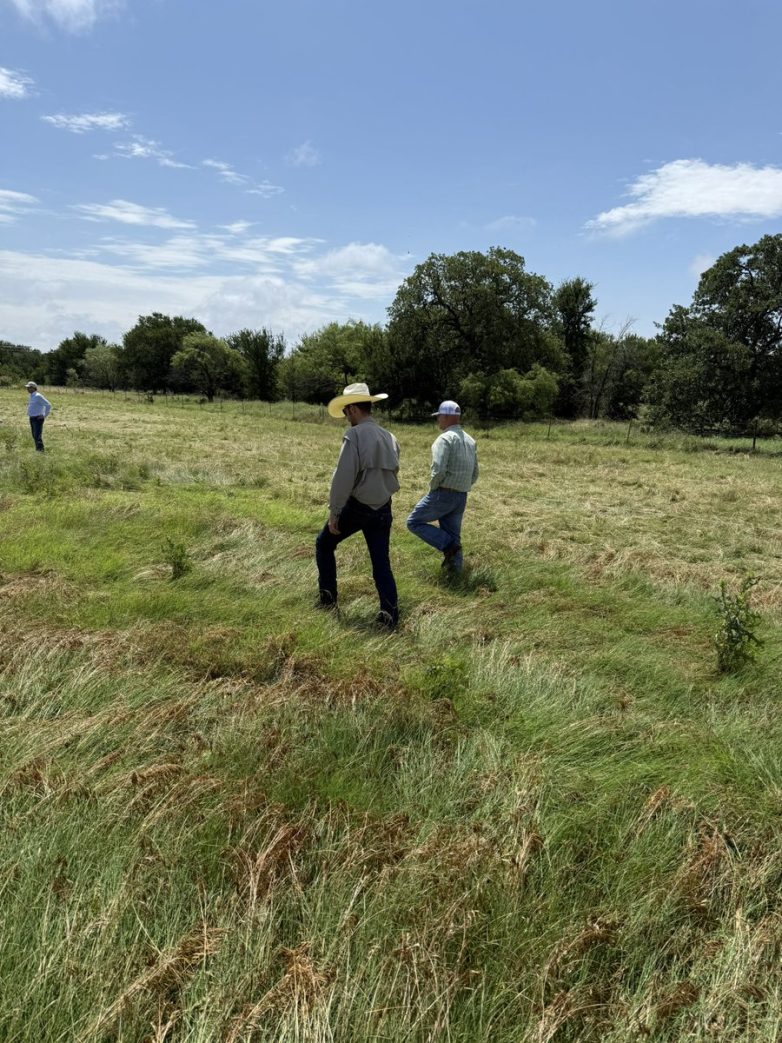
“Is Regenerative Ranching the Key to Earth’s Survival?”
sustainable livestock management, ecological farming practices, soil health restoration
Understanding Regenerative Ranching: A Sustainable Approach to Agriculture
Regenerative ranching is an innovative agricultural practice that seeks to harmonize livestock management with ecological restoration. By employing strategies such as rotational grazing, cover cropping, and minimal chemical inputs, regenerative ranching not only enhances biodiversity but also bolsters food security, economic stability, and national security. This holistic approach to land management aims to restore ecosystems and improve soil health, creating a sustainable future for both agriculture and the environment.
The Core Principles of Regenerative Ranching
At the heart of regenerative ranching lies the principle of mimicking natural ecosystems. This practice involves a range of techniques designed to improve land productivity while minimizing negative environmental impacts.
1. **Rotational Grazing**: This technique involves moving livestock between pastures to prevent overgrazing and allow grasses to recover. By rotating animals, ranchers can promote healthier soils, increase carbon sequestration, and enhance biodiversity.
2. **Cover Cropping**: Planting cover crops helps to protect the soil from erosion, enhance soil fertility, and improve water retention. These crops act as a natural barrier against weeds and pests, reducing the need for chemical herbicides and pesticides.
3. **Minimal Chemical Use**: Regenerative ranching emphasizes reducing or eliminating synthetic fertilizers and pesticides. This not only protects the ecosystem but also promotes healthier food products for consumers.
Benefits of Regenerative Ranching
The benefits of regenerative ranching extend beyond the individual rancher to encompass broader societal and environmental gains.
1. **Enhanced Biodiversity**: By restoring ecosystems and promoting a variety of plant and animal life, regenerative ranching contributes to a more resilient and balanced ecosystem. This biodiversity is crucial for maintaining healthy agricultural systems.
2. **Food Security**: As global populations continue to rise, the need for sustainable food production becomes increasingly urgent. Regenerative ranching can produce food in a manner that is both environmentally friendly and economically viable.
3. **Economic Stability**: Regenerative ranching practices can lead to improved soil health, which in turn increases crop yields and livestock productivity. Healthy soils are more resilient to droughts and other climate challenges, ensuring a stable food supply.
4. **National Security**: A strong agricultural system enhances national security by ensuring that countries can produce their own food. Regenerative ranching contributes to this by improving the sustainability and resilience of local food systems.
The Role of Soil Health in Regenerative Ranching
Soil health is a fundamental component of regenerative ranching. Healthy soils are rich in organic matter, supporting a diverse range of microorganisms that contribute to nutrient cycling and plant growth. By focusing on soil health, ranchers can create a self-sustaining ecosystem that requires fewer inputs and produces healthier food.
Techniques such as composting, mulching, and reduced tillage can significantly enhance soil structure and fertility. As soil health improves, ranchers can see a decrease in reliance on chemical fertilizers and pesticides, leading to a more sustainable and eco-friendly farming operation.
Challenges Facing Regenerative Ranching
While regenerative ranching offers numerous benefits, it is not without its challenges. Transitioning from conventional to regenerative practices can be daunting for ranchers, requiring a shift in mindset, additional education, and sometimes significant financial investment.
Furthermore, market demand for sustainably produced food can vary, making it difficult for some ranchers to find buyers for their products. Building consumer awareness and support for regenerative practices is critical in overcoming these challenges.
Conclusion: A Path Forward for Regenerative Ranching
Regenerative ranching represents a promising approach to agriculture, integrating livestock management with ecological restoration to create a more sustainable future. By focusing on practices that enhance biodiversity, improve soil health, and support food security, regenerative ranching has the potential to transform the agricultural landscape.
As awareness of the benefits of regenerative ranching continues to grow, it is crucial for consumers, farmers, and policymakers to support and promote these practices. By working together, we can ensure a resilient and sustainable food system for generations to come.
In conclusion, embracing regenerative ranching is not just about improving agricultural practices; it is about fostering a deeper connection with our ecosystems, enhancing the quality of our food, and ensuring a sustainable future for our planet. By adopting these practices, we contribute to a healthier environment, bolster food security, and promote economic stability while enhancing national security through self-sufficiency in food production.

Regenerative ranching, integrating livestock with practices like rotational grazing, cover cropping, and minimal chemical use, enhances biodiversity, food security, economic stability, and national security by restoring ecosystems and improving soil health. By mimicking natural… pic.twitter.com/6YDSiQ9UA7
— JB and family (@SimmonsBart) June 7, 2025
Understanding Regenerative Ranching: A Sustainable Approach to Agriculture
Regenerative ranching is becoming a hot topic in sustainable agriculture discussions. You might have heard about it through social media, like the insightful tweet by JB and family that highlights the integration of livestock with practices such as rotational grazing, cover cropping, and minimal chemical use. This approach not only promotes biodiversity but also enhances food security, economic stability, and national security. In this article, we’ll dive deep into regenerative ranching, exploring its practices, benefits, and how it can transform our agricultural landscape.
What is Regenerative Ranching?
At its core, regenerative ranching is all about restoring and enhancing the health of ecosystems through specific agricultural practices. It’s a holistic approach that considers the land, the animals, and the farmer as interconnected components of a larger system. By mimicking natural processes, regenerative ranching aims to create a sustainable farming model that benefits the environment and communities alike.
Key Practices in Regenerative Ranching
When we talk about regenerative ranching, several practices come to mind. These practices are designed to work with nature rather than against it. Here are some of the most important ones:
1. Rotational Grazing
Rotational grazing is a method where livestock are moved between pastures to prevent overgrazing in any one area. This practice allows grasslands to recover and reduces soil erosion. It’s fascinating how animals can actually help regenerate the land when managed correctly! When animals graze, they stimulate grass growth and contribute to nutrient cycling.
2. Cover Cropping
Cover cropping involves planting crops that aren’t meant to be harvested, primarily to protect the soil. These crops help improve soil health by preventing erosion, adding organic matter, and promoting biodiversity among soil organisms. Farmers often use legumes as cover crops because they can fix nitrogen in the soil, enriching it for future crops.
3. Minimal Chemical Use
One of the significant drawbacks of conventional farming is the heavy reliance on chemical fertilizers and pesticides. Regenerative ranching minimizes or completely eliminates these chemicals, opting for organic and natural alternatives instead. This not only improves soil health but also reduces potential harm to local ecosystems.
The Benefits of Regenerative Ranching
So, why should we care about regenerative ranching? The benefits are substantial and far-reaching:
1. Enhanced Biodiversity
By integrating livestock and various plant species, regenerative ranching promotes a more diverse ecosystem. This biodiversity is crucial for creating resilient agricultural systems that can withstand pests, diseases, and changing climate conditions.
2. Improved Soil Health
Healthy soil is a cornerstone of successful agriculture. Practices like rotational grazing and cover cropping help build soil organic matter, improve water retention, and enhance nutrient cycling. Healthier soil leads to better crop yields and a more sustainable farming system overall.
3. Food Security
With the world’s population continuing to grow, food security is a pressing issue. Regenerative ranching can contribute to a more reliable food supply by increasing the resilience of agricultural systems. By restoring ecosystems and improving soil health, we can produce more food sustainably.
4. Economic Stability for Farmers
Regenerative ranching can lead to lower input costs for farmers, as they rely less on expensive chemical fertilizers and pesticides. Moreover, healthier soil often means better crop yields, contributing to improved economic stability. Farmers who adopt these practices often find themselves more resilient against market fluctuations and climate challenges.
5. National Security
Believe it or not, regenerative ranching can also play a role in national security. By promoting local food production and reducing reliance on imported goods, countries can enhance their food sovereignty. A strong, self-sufficient agricultural system is vital for maintaining stability and security.
Challenges of Regenerative Ranching
While the benefits are clear, it’s essential to acknowledge the challenges that come with transitioning to regenerative ranching. Some of these challenges include:
1. Knowledge and Education
Many farmers may not be familiar with regenerative practices or how to implement them effectively. Education and training programs are crucial to help farmers understand and adopt these methods.
2. Initial Costs
Transitioning to regenerative ranching often requires upfront investments in new equipment or infrastructure. While these costs can be offset in the long run, they can be a barrier for some farmers.
3. Market Demand
There is a growing demand for sustainably produced food, but it’s not universal. Farmers need to find markets willing to pay a premium for regenerative products, which can sometimes be challenging.
How to Get Involved in Regenerative Ranching
If you’re interested in supporting regenerative ranching, there are several ways to get involved:
1. Educate Yourself
Knowledge is power! Start by learning more about regenerative practices. There are plenty of resources available online, including courses and webinars from organizations dedicated to sustainable agriculture, such as the Regeneration International.
2. Support Local Farmers
Look for local farms that practice regenerative ranching. Buying directly from these farmers helps support their efforts and promotes sustainable practices in your community. Check out farmers’ markets or local co-ops for options.
3. Advocate for Policy Change
Encouraging policies that support regenerative agriculture can help create a more sustainable food system. Get involved with local advocacy groups focused on promoting sustainable farming practices.
4. Share the Knowledge
Spread the word! Share articles, documentaries, or your own experiences with regenerative ranching on social media. The more people understand the importance of these practices, the more momentum the movement will gain.
Regenerative Ranching: A Path to a Sustainable Future
In conclusion, regenerative ranching offers a promising way to shift our agricultural practices towards sustainability. By integrating livestock with methods like rotational grazing, cover cropping, and minimal chemical use, we can enhance biodiversity, improve soil health, and create a more secure food system. This approach not only benefits the environment but also supports farmers and communities, paving the way for a more resilient future. If you’re interested in sustainability, regenerative ranching is a movement worth following!
So, what do you think? Are you ready to support regenerative ranching and help create a healthier planet?
Regenerative ranching, integrating livestock with practices like rotational grazing, cover cropping, and minimal chemical use, enhances biodiversity, food security, economic stability, and national security by restoring ecosystems and improving soil health. By mimicking natural